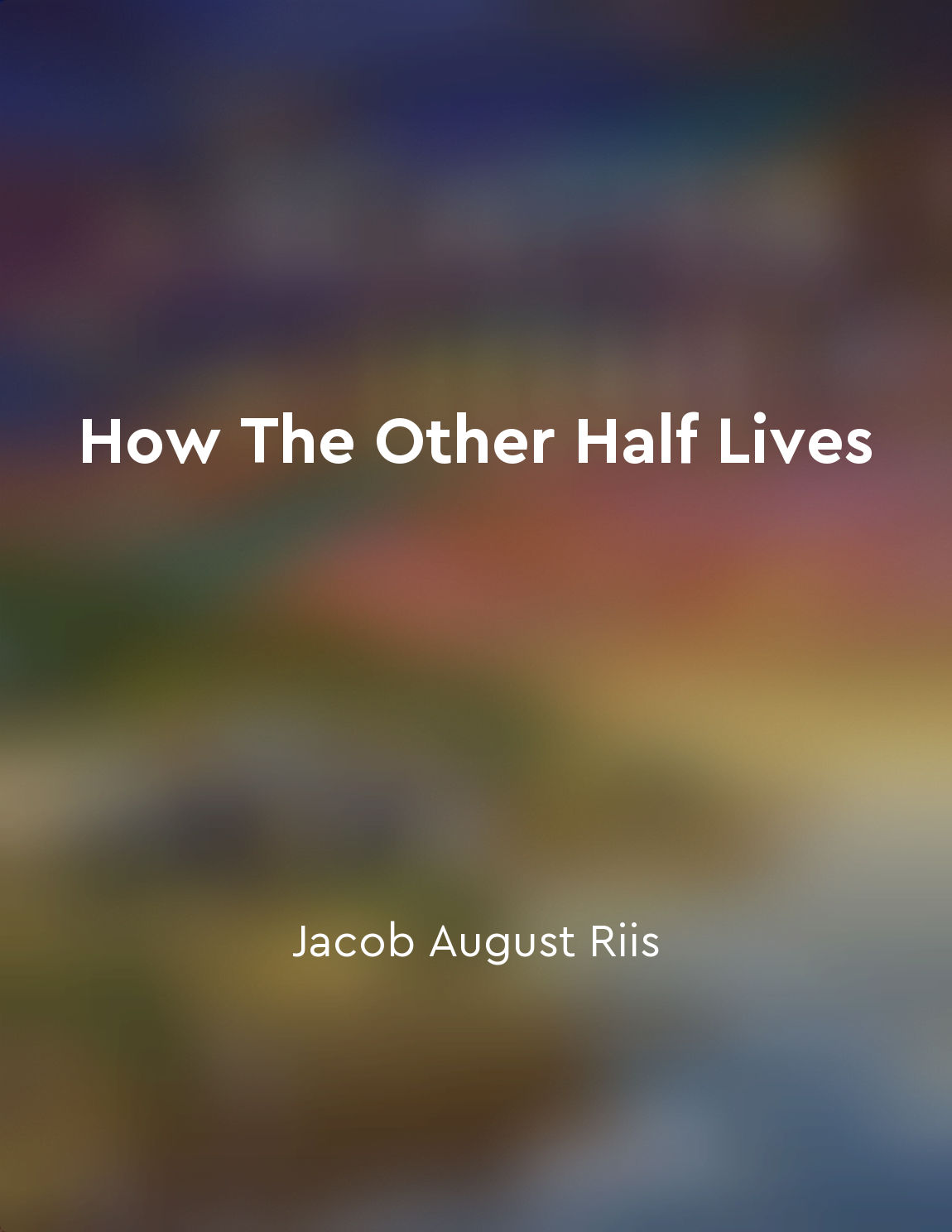Urgency for change from "summary" of How The Other Half Lives by Jacob August Riis
The stark reality of urban poverty as depicted in the pages of "How The Other Half Lives" by Jacob August Riis sends a clear message - change is not only necessary, but urgent. Riis vividly portrays the squalid living conditions of the tenements, the overcrowded and unsanitary quarters where families struggle to survive. The photographs and descriptions of these spaces leave little room for doubt - something must be done to improve the lives of these people. Riis highlights the inequality and injustice that permeate society, drawing attention to the stark contrast between the living conditions of the wealthy and the impoverished. He exposes the harsh realities faced by the urban poor, shedding light on the systemic issues that perpetuate their suffering. The urgency for change is palpable in his words, as he implores readers to take action and address the root causes of poverty and inequality. Through his detailed descriptions and powerful images, Riis calls for a shift in perspective and a reexamination of societal norms. He challenges readers to confront their own biases and preconceived notions about poverty, urging them to see the humanity and dignity of those living in the tenements. The urgency for change lies in the need for empathy and compassion, for a recognition of the inherent worth of every individual. Riis's call to action is not just a moral imperative, but a practical necessity. The conditions he describes are not only deplorable, but also unsustainable. The overcrowding, lack of sanitation, and rampant disease pose a threat to public health and safety. The urgency for change is driven by a desire to create a more just and equitable society, one where all individuals have the opportunity to thrive.- "How The Other Half Lives" by Jacob August Riis serves as a powerful reminder of the urgent need for change in the face of urban poverty. Riis's impassioned plea for a more just and equitable society resonates with readers today, challenging them to confront the harsh realities of inequality and take meaningful action to address them.
Similar Posts
Working towards a more equitable and inclusive society for all
The vision of a society where every individual is given equal opportunities and resources to thrive is a noble one. It is a vis...

Lack of empathy is evident
The absence of compassion is glaringly apparent in the observations made during my time in the industrial towns of Northern Eng...
Ultimately, "Invisible Child" is a powerful call to action to address the root causes of homelessness and poverty
The narrative of "Invisible Child" sheds light on the systemic issues that perpetuate homelessness and poverty in society. Thro...
The book offers a nuanced portrayal of the challenges faced by homeless families
The stories of homeless families in the book reveal the complex web of challenges they face daily. Through vivid descriptions a...
The pressure to conform can stifle individuality
In Nigeria, Nkem is expected to conform to societal expectations of marriage and motherhood. Despite her desire to pursue a car...
Harsh working conditions in meatpacking industry
The men in the meatpacking industry toiled endlessly in the grim and unforgiving environment of the slaughterhouses. From sunri...
Adventures in London
In days to come, the Prince and the Pauper roamed about the great city of London, sometimes together, sometimes apart. They saw...

Poverty can be a barrier to achieving one's aspirations
In a world where dreams are big and opportunities are limited, poverty can act as a formidable obstacle standing in the way of ...


